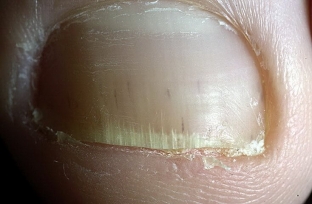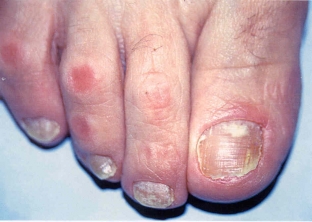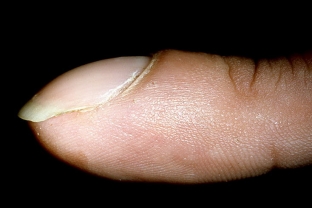Onychodystrophy is a process in which the color of the nail plate and its structure changes, and pathological changes are also present in the nail fold. All changes in the nail of a non-fungal nature are called onychodystrophy. Since nails are an important component of appearance, especially for women, onychodystrophy causes a lot of trouble and emotional distress. For the treatment of onychodystrophies, it is necessary to establish their causes. The causes of onychodystrophies can be very diverse, read about them on estet-portal.com.
Varieties of onychodystrophies. Causes of onychodystrophy of leukonychia
Onychodystrophies include leukonychia, Lindsay's nails, melanonychia, micronychia, anonychia, subungual hyperkeratosis, onychogryphosis, hapalonychia, koilonychia, pachyonychia, platonychia, onychoshisis, onychomadesis. Find out the reasons for the above described onychodystrophy further on estet-portal.com. The most common among onychodystrophies are leukonychia. They are manifested by white patches on the nails, which appear when the matrix function is impaired. The configuration and structure of the plate remains unchanged.
The causes of leukonychia are trophic disorders, inflammatory processes and injuries of the nail plate.
Leukonychia can also be a sign of severe somatic pathology.
Causes of onychodystrophies, which are manifested by a change in the color of the nail:
- Lindsay's nails are characterized by a white coloration of the proximal part of the nail bed, and the distal part is brown due to the deposition of melanin. Such onychodystrophy is a sign of chronic renal failure.
- Melanonychia is characterized by hyperpigmentation of the nail and appears after trauma, drug exposure, fungal infection, and swelling of the nail plate.

Causes of onychodystrophies, which are manifested by a change in the size and structure of the nail
Small short nails are called micronichia and are found in systemic scleroderma and trophoneurosis. In the absence of nail plates (anonychia), we are talking about rare hereditary anomalies. Acquired anonychia can occur with injuries of the nail matrix, against the background of organic pathologies of the nervous system and with dermatoses.
Gapalonychia – these are soft, brittle and thin nails due to a decrease in the volume of the matrix. The causes of this type of onychodystrophy are sulfur deficiency, genetic predisposition, lack of vitamins A and B, chronic arthritis, peripheral neuropathies, angiopathy, hypothyroidism, improper manicure, matrix trauma and contact with chemicals.

Causes of onychodystrophies, which are manifested by a change in the shape of the nail
Spoon-shaped concavity of the nails is called koilonychia and is more common in iron deficiency anemia.
Changes in the fingers in the form of drumsticks and Hippocratic nails are observed in pathologies of the lungs and in cardiovascular insufficiency.
Congenital diseases such as ichthyosis and follicular keratosis show a tower-like thickening of the horny mass under the nail plate, called pachyonychia. Platonychia is characterized by a flat nail plate and is congenital.

Curvature of the nail plate in the form of a bird's claw, thickening and lengthening of the nail is called onychogryphosis. The big toes are often affected. At the same time, the nails acquire a stony density, which makes it impossible to cut them. The causes of this type of onychodystrophy is a violation of microcirculation in the tissues of the phalanx of the finger.
Buffed and polished nails are a sign of chronic itching in the patient. Detachment of the nail plate that begins at the proximal edge of the nail bed is called onychomadesis and occurs in scarlet fever, erythroderma, alopecia areata, Lyell's syndrome, and phototoxic reactions.
The causes of onychodystrophies are diverse, but many come down to pathologies of internal organs. Also on our website you can learn how to identify the presence of diseases by the appearance of nails.







Add a comment